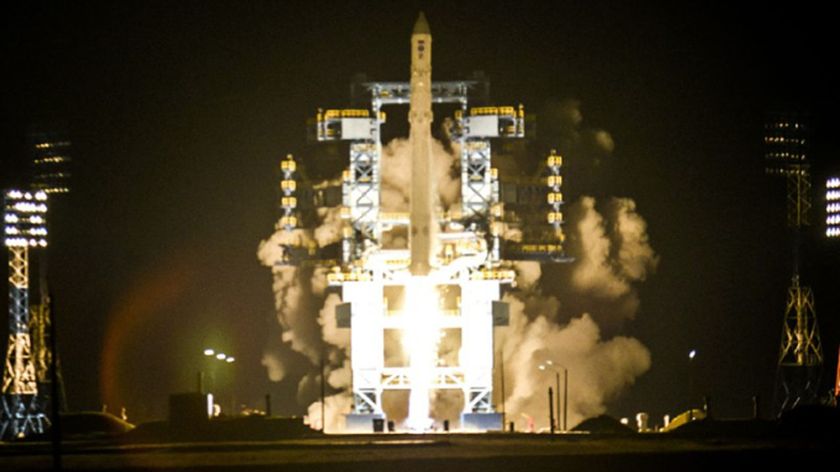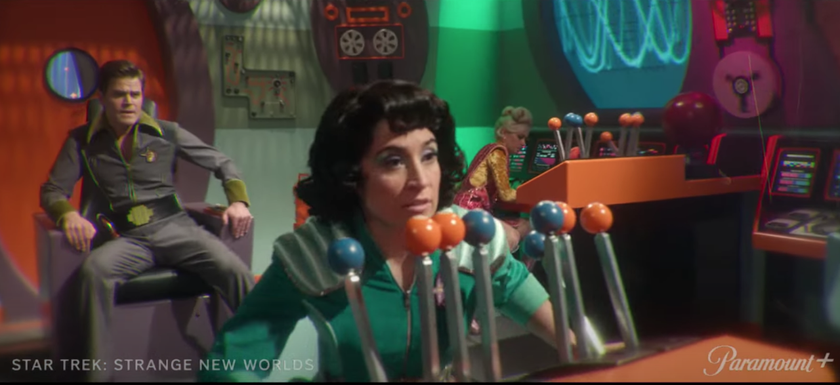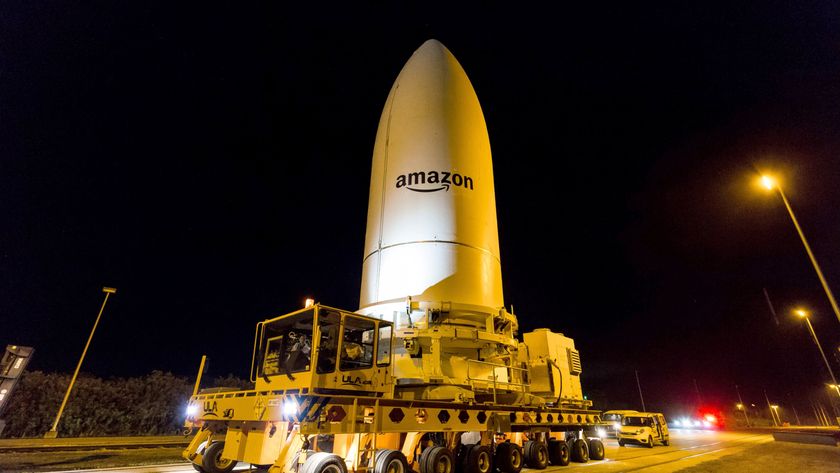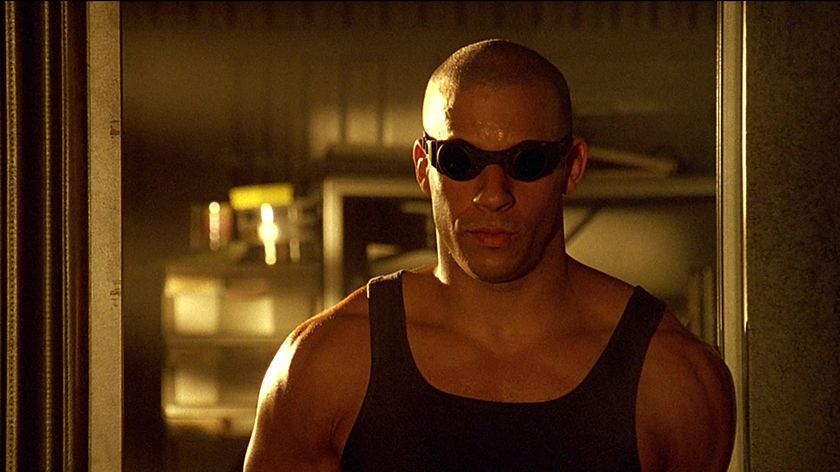Quantum Astronomy: A Cosmic-Scale Double-Slit Experiment
This is the final article in a series of four articles each with a separate explanation of different quantum phenomena. Each article is a piece of a mosaic, so every one is needed to understand the final explanation of the quantum astronomy experiment we propose, possibly using the Allen Telescope Array and the narrow-band radio-wave detectors being build by the SETI Institute and the University of California, Berkeley.
In the preceding three essays we discussed Young's double-slit experiment where light was shown to behave as a wave. We also discussed the birth of quantum physics where light was also shown to behave like a particle. In the second article we discussed a basic limitation on measurement imposed by the Heisenberg Uncertainty Principle and how one may "trade" knowledge of one measurement for another. In article three we then discussed John Bell's concept of knowability and unknowability, and then John Wheeler's Gedanken (thought) experiment creating a cosmic-scale double-slit experiment requiring an immensely (billions of miles) long fiber optics cable. It is the application of John Bell's concept of knowability and unknowability that we shall now apply to the uncertainty principle in order to try to perform John Wheeler's cosmic double-slit experiment over cosmic distances that we shall discuss in this article.
In order to realize this experiment, however, one must come up with a substitute for this unbuildably long fiber optics cable, and this is where the SETI Institute's new Allen Telescope Array and its narrow-band radio wave detectors can play an important part. SETI radio projects use the fact that, as far as we know, no natural (i.e., non-technological) source of radio waves can make a very narrow-band radio channel. When you tune to a station on the radio, one turn and you are on another channel. If you tune to a radio galaxy, however, you can turn the dial many dozens of times and you will still be on the same channel, so to speak--you will hear the same sounds. In other words, as far as we know, only technology can make a narrow (1 Hertz wide) radio channel. Thus, looking for narrow-band signals in space should be a good way to look for evidence of any radio-technological civilizations around other stars. Fortunately for quantum astronomy, it also turns out that an extremely narrow-band radio channel can also be used to replace that unrealistically long fiber optics cable! But to explain just how this can be done we need to first look again at the uncertainty principle.
When a colleague, Dr. David P. Carico of San Francisco State University, and I began thinking about actually carrying out Professor Wheeler's delayed-choice experiment, we realized that the uncertainty principle needed to be satisfied if one is to obtain an interference pattern. That is, one needs to be ignorant of which path the light traveled--along path A (directly from the quasar) or along path B (the path most bent by the gravity of the intervening galaxy back toward Earth) so that it could "travel both paths" and so interfere with itself. (The terms "travel" and "path" as applied to a photon-wave, of course, do not have any real meaning in quantum physics if the particle-nature does not exist until it is measured. But for now we will use such terms, as it is difficult to speak of quantum effects without some reference to our classical notions of space and time.) The energy-time uncertainty principle, as we will recall, referred to the fact that knowing the energy of a given particle meant that one could not know precisely the time the particle had that energy. And, "complimentarily" (the term for this that Nehls Bohr used), if one knows the time to a high precision, one cannot then know what that energy was with greater accuracy than the basic quantum value. (This quantum value, as we will also recall, is called "Planck's constant", or one quantum of energy and is actually quite a small value, so we do not usually notice this uncertainty constraint in everyday activities.)
Now in thinking about how to do this experiment we thought that perhaps it might be possible to "trade" knowledge of energy for knowledge of time, but in this case the time would be the delay time between the two paths of the gravitational lens images, A and B. The uncertainty in energy then might be able to replace the hugely long fiber optics cable with, instead, a very narrow-band radio detector. It's OK. Read on. I can hopefully explain what I mean. We have seen that we can trade knowledge of energy for knowledge of time (remember the balloon image in a previous article with "delta-E" written on one end and "delta-t" written on the other.) We also remember that if we can tell which path each photon traveled, we will not get an interference pattern but rather just a picture of a quasar at A and another (image of it) at B. To understand this "trade" then, let's take just a bit closer look at what we mean by a narrow-band radio wave.
It is known, in the physics of electromagnetic waves, that longer waves have less energy than shorter waves. The blue light we see has more energy per photon than the red light we see. (This can be extended to lower energy infrared photons, and higher energy ultraviolet photons, or even to very low energy radio photons, and even very much higher energy x-ray photons.) In photography, using a filter on the camera lens can allow only blue light, or red light into the camera. Sunlight is usually a whole mixture of blues, greens, yellows, oranges, reds, and so on, and therefore also a mixture of photons of light of all kinds of energy, high and low. When one uses, say, a red filter, one is cutting out the higher energy blue photons from going into the camera, and so only detects the lower energy red light. The narrower the filter, the less range of energy is let into the camera.
Similarly for radio detectors, if one has a broadband detector, one is letting in radio waves of all sorts of energies all at once. However if one has a very narrow-band radio detector (such as are used in the search for extraterrestrial intelligent technology), one is highly constraining the range of energies being detected. Only the radio photons of a very narrow spread in energy are actually measured. Remembering the uncertainty principle for energy and time, we can recognize that narrow-band radio detectors thus represent a constraint on the value of the energy being measured. Now what about time, however? For that, let's look at the crossing of the radio waves (which is just long wavelength light) coming along paths A and/or B. We can only get an interference pattern if we cannot tell (or even potentially be able to tell) which path a radio photon took to reach our detector. But, if the difference in the travel time between paths A and B is long enough (this is called the "delay time" of the gravitational lens), then there is plenty of time to detect, for example, if a flare went off at the quasar so that image A brightened, followed by image B some time (the delay time) later. This is actually how the delay time between gravitational lens paths is measured. Now the next sentence is the most important. However, if we use a narrow enough radio bandpass, we can potentially constrain the energy to such a precise value, that the time uncertainty is so large that it exceeds the actual delay time of the gravitational lens. In other words, we can constrain the energy (by using narrow-band radio detectors) so much that we can exceeded the ability--even potentially--of measuring which path the photon travels because our uncertainty in the arrival time of the photon is now larger (because of the uncertainty principle) than the actual delay time or travel time difference between paths A and B. Thus we cannot tell along which path the photon traveled and so should get an interference pattern at the detectors. A very narrow-band (but real) radio detector then, can substitute for an unrealistically long fiber optics cable to get an interference pattern at the intersection of paths A and B.
Get the Space.com Newsletter
Breaking space news, the latest updates on rocket launches, skywatching events and more!
So, how does one proceed to do this? We can start observing the gravitational lens using a radio telescope with very narrow-band detectors. We set the detectors on the narrowest-band possible (let's say one-hundredth of a Hertz, which means we know the wavelength--and therefore energy--of the radio wave coming in to within one-hundredth of a wavelength per second). We focus the two images of the quasar across each other and (if the delay time is not too long--longer than 100 seconds in this case) we will obtain an interference pattern. This means we cannot know which path the radio photons "took." (We also assume no detectable rapid fluctuations from the quasar for simplicity, although there are ways of dealing with this effect, as well, using "choppers" in the path of the incoming light.) Now what happens if we increase the allowable energies being detected (i.e., increase the bandpass of the radio detectors)? At first we may still get an interference pattern. But if we continue to increase the bandpass, at some point the interference pattern will disappear, and we shall simply get a (radio) picture of a quasar at location A, and another of its image at location B. The interference pattern will have disappeared at exactly the point where we could begin to tell which path the photons took. In other words, by allowing ourselves to become more and more ignorant of the energy of the radio waves arriving, we simultaneously allowed an increased knowledge (according to the uncertainty principle) of the time interval. And when we decreased our knowledge of the energy to the point where our knowledge of the time interval could drop below the actual delay time between light paths of the gravitational lens, we could (at least in principle) tell which path each photon took. Thus, the uncertainty principle "kicks in" and says that one cannot know which path a photon took and still get a wave phenomenon (i.e., an interference pattern). One cannot have one's photon and wave it too.
Thus we may be able to use very narrow-band radio detectors to realize the delayed-choice (perhaps no longer just Gedanken) experiment proposed by Professor Wheeler. What is of interest in doing such an experiment? First, it may represent a possible way to directly measure delay times for gravitational lenses that don't vary much in brightness, and such delay times can be used to measure the expansion rate of the universe (this parameter is called the "Hubble constant") directly. But more intriguing, perhaps, is that it can possibly provide a measure of the minimum time it takes for a wave to "become" a particle. If the quasar is one billion light years away (that's about six billion trillion miles) and the interference pattern is being formed by a probability wave that is traveling along both paths A and B, then when one increases the bandpass (say, over one hour's time) to the point where the wave becomes a particle (photon) then one might be able to speak in terms of the wave "becoming" a particle at the minimum rate of a billion light years per hour. This rate is considered in most quantum physics formulations to be instantaneous, but one is reminded of Galileo and a colleague standing on opposite hillsides with lamps trying to measure the speed of light. When one opened the lampshade, as soon as the other saw it, they opened their lampshade, and so, back and forth. They decided that the speed of light was either instantaneous of very very fast. It turned out to be very very fast (186,300 miles per second)--far too fast to measure with shaded lamps on nearby hills. So perhaps quantum astronomy may someday allow such a measurement of the speed of the wave-to-particle transition, if it is not instantaneous. What we have outlined here is just one experiment in many possible experiments that could be performed in what may be one of the most interesting new fields of the 21st Century, quantum astronomy.
Join our Space Forums to keep talking space on the latest missions, night sky and more! And if you have a news tip, correction or comment, let us know at: community@space.com.
Laurance Doyle is a principal investigator for the Center for the Study of Life in the Universe at the SETI Institute, where he has been since 1987, and is a member of the NASA Kepler Mission Science Team. Doyle’s research has focused on the formation and detection of extrasolar planets. He has also theorized how patterns in animal communication, like those of social cetaceans, relate to humans.












